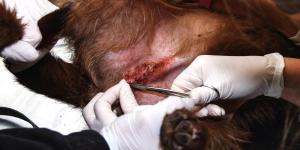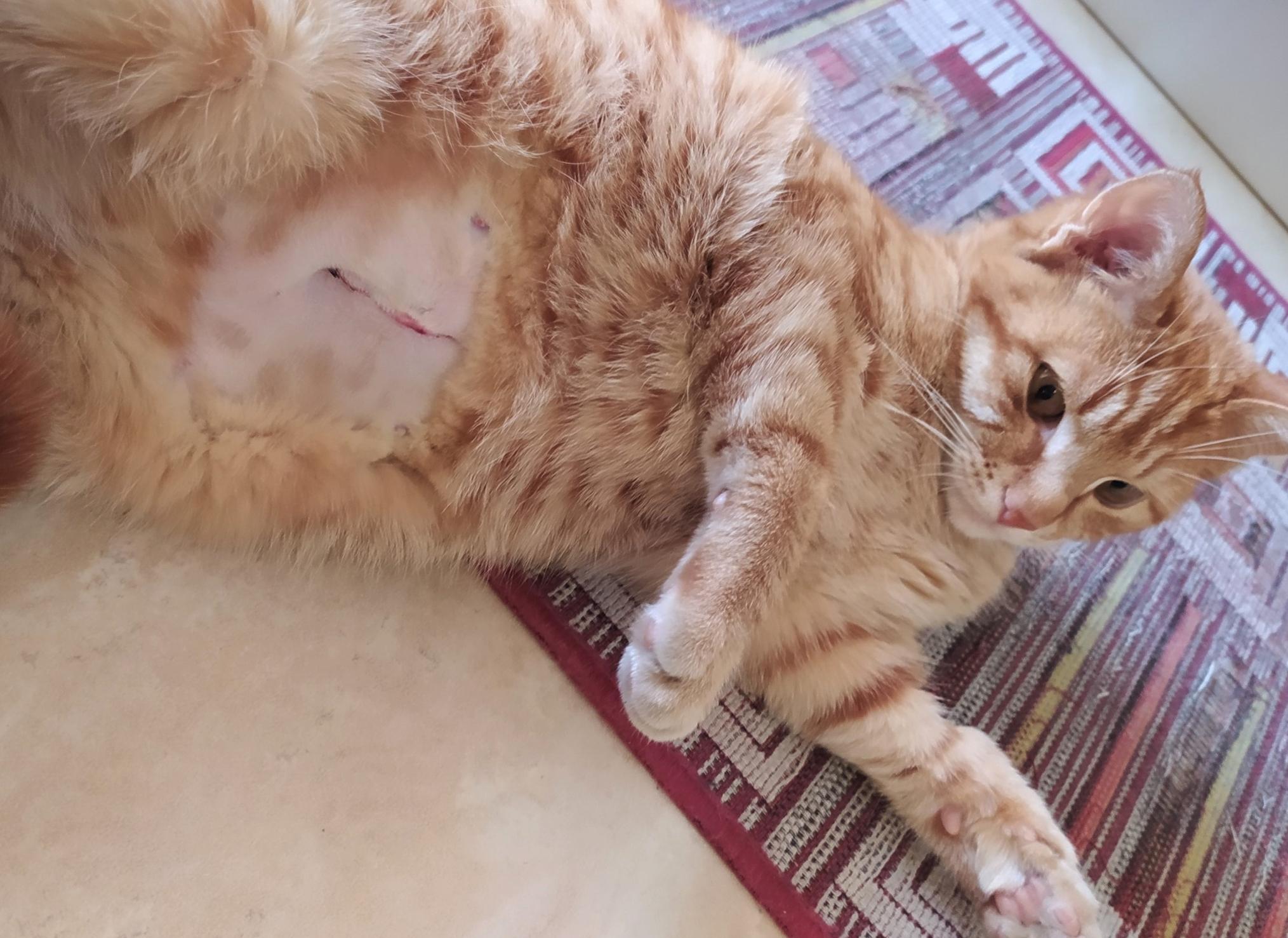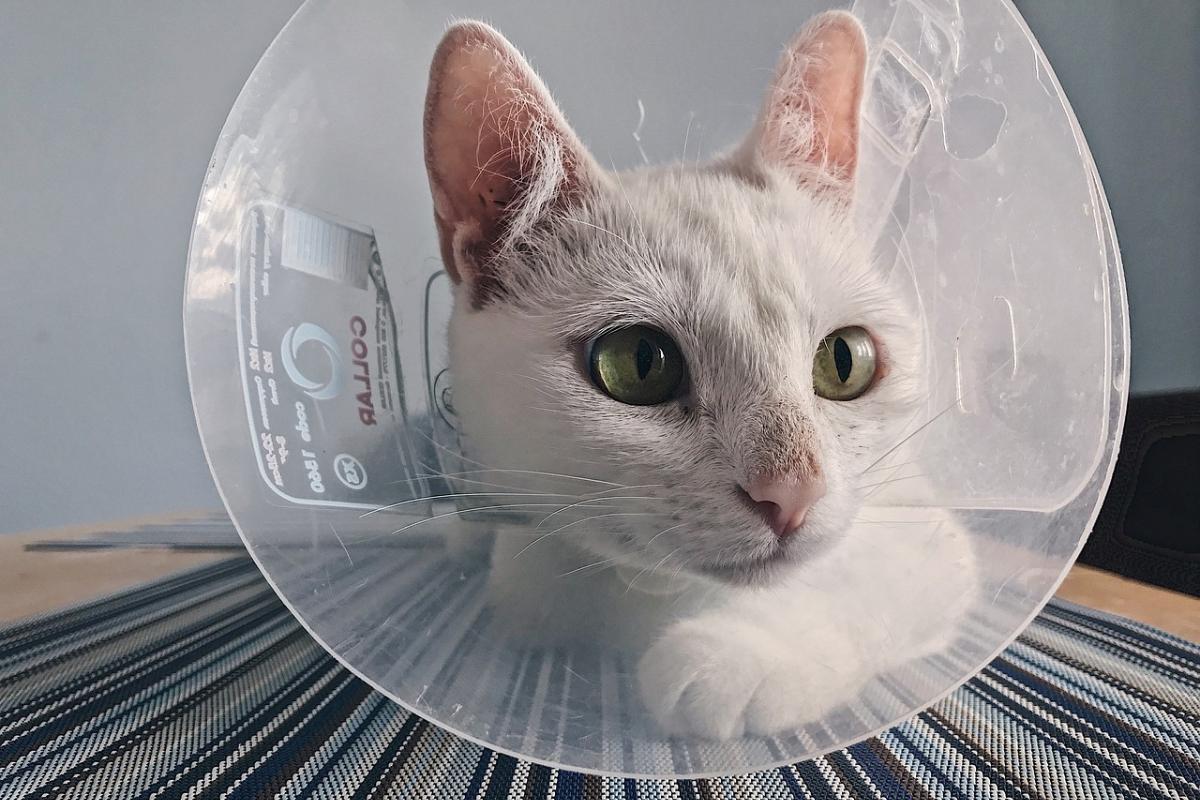Cat Spay Incision Healing Process

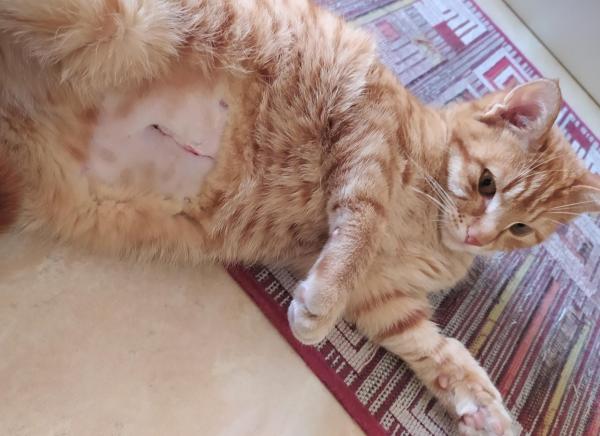

See files for Cats
The healing process of a cat's spay incision will most likely pass without incident, as long as the precautions detailed by your veterinarian are closely observed. While some cats may react differently than others, it is important to remember it is a safe procedure which provides important benefits to cat and guardian. There are different spaying techniques which can heal differently, but a competent and responsible veterinarian should allow for a smooth healing process of the incision wound. This includes providing measures to prevent the cat from interacting with the wound. Unfortunately, there are incidences where the cat's incision can become infected. For this reason, it is important you recognize the symptoms of a cat spay infection and what treatment options are available.
At AnimalWised, we look into closer detail at the cat spay incision healing process. Moreover, we discover the symptoms and treatment of a spay incision infection in cats to know what to do if the worst happens.
Cat spay incision healing process
There are different types of sterilization procedures for female cats, but spaying is the most recommended. This procedure is known as an ovariohysterectomy as it removes both the ovaries and the uterus of the cat. This not only prevents the cat from becoming pregnant, but it stops them producing levels of certain hormones which affect their reproductive behaviors. For this reason, spayed cats do not have a heat cycle.
Spaying also benefits the cat as it stops them from developing various diseases related to their reproductive organs. It also means they do not feel the frustration brought upon by their heat cycle when they cannot mate with a male. Guardians will also avoid seeing their cat be in such an agitated state and will have a more harmonious coexistence in the home.
The benefit of spaying cats extends beyond the individual cat and their guardian. Too many cats every year are unable to be adopted due to the high demand on animal shelters. Many of these are needlessly destroyed because of it. For this reason, spaying helps avoid unwanted pregnancies in cats and helps us to protect and provide for cats in need.
To better understand the cat spay incision healing process, we can look at the stages of the ovariohysterectomy surgical procedure in felines:
- Despite being a routine procedure, the cat is placed under general anesthesia.
- A small part of their abdominal area is shaved and sterilized to avoid infection.
- Below the cat's umbilical scar (belly button), an incision between 1 to 4 cm is made with a sharp scalpel and any fat is removed.
- The first uterine horn is extracted with the first ovary attached. The blood vessels are clamped and ligated. This is repeated with the second uterine horn and ovary.
- The uterus body is then extracted, removed and ligated.
- The abdominal wall and skin are sutured to close the incision.
How a spaying procedure is carried out may vary according to region and individual veterinarian[1]. However, the basic procedure is the same. What sutures are used will also depend on veterinarian, as well as availability. While stainless steel sutures have been used, it is much more common to see synthetic absorbable sutures[2]. Absorbable sutures do not need to be removed after the procedure and improve recovery for the cat.
Although absorbable sutures and a better level of care offered by veterinary medicine better enable us to avoid infection, it is possible the cat spay incision healing process can be interrupted. We look at what happens when a cat's spay incision becomes infected.
Causes of cat spay incision infection
If you comply with the preventive measures established by the veterinarian, the cat spay incision healing process should not be complicated. Many of these measures are in place to prevent the cat from licking their spay incision site, something they do to ease the irritation they may feel. If the cat is able to lick the incision, they risk introducing secondary bacteria and causing an infection.
Similarly, the cat's incision coming into contact with dirty surface can introduce bacteria. Since there is bacteria in every environment to some extent, the vet will also prescribe preventive antibiotics to stop any infection. They will also prescribe anti-inflammatory drugs to both reduce inflammation and mitigate pain.
To prevent the cat accessing their own spay incision, we need to place an E-collar or Elizabethan collar around their neck. Although many cats will not like them, they should get used to them soon and the benefit is they stop the cat licking their incision. We also need to ensure the cat does not have access to the outside and that any environment to which they have access has immaculate hygiene.
Although we may want to comfort our cat, we need to avoid picking them up and manipulating them. We can both open the sutures of the spay incision and introduce bacteria to the incision site. If other cat or animals are in the home, they need to be separated until the healing process is complete, otherwise even well-intentioned play can open their stitches. We also need to avoid bathing the animal until their spay incision is healed.
Although post-surgical wound infections are usually the main complication of a cat's spay surgery, there are other complications which can affect the healing process. They include the following:
- Dehiscence of the suture: the suture opens due to a blow or self-mutilation that will require a new surgical intervention.
- Fluid buildup: due to the appearance of seromas and abscesses.
Learn more about recovery from surgery with our article on how long anesthesia for cats lasts.
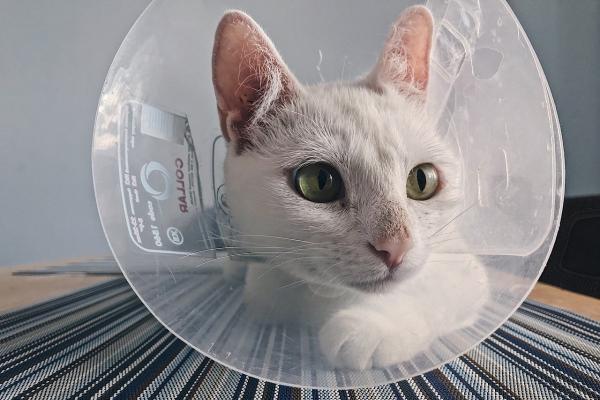
Cat spay incision infection symptoms
Although the above precautions should ensure the cat spay incision healing process goes smoothly, it is possible an incision wound can become infected. If we have not followed the veterinary advice, this risk is much greater. Without causing upset to the cat, you will need to regularly monitor their incision wound and look for the following signs of infection:
- Fever
- Pain or swelling that does not improve
- Increase in the size of the lymph node closest to the wound
- Discharge of pus
- Foul wound odor
- Redness of the incision area
- Increased temperature or pain in the area
If you notice any of these symptoms, you should go to your veterinarian immediately. They will assess the state of your cat's wound to rule out or confirm an infection. This will require antibiotics, as well as proper hygiene and cleaning.
Learn about one of the antibiotics a vet may prescribe with our guide to doxycycline for cats.
Cat spay incision infection treatment
One of the most important things to take into account so that your cat's wound heals properly and does not become infected is to keep it properly sanitized. This is achieved when the wound is visibly clean and free of scabs. The ideal is to clean the wound 2 to 3 times a day with products such as chlorhexidine for cats or diluted povidone-iodine. Apply these products on gauze, using gentle pressure to clean the wound. Clean from the inside out of the wound so we do not introduce bacteria.
In order for an infected spay incision to heal properly, it is important the cat does not bite or lick it. For this, the most effective is the use of the Elizabethan collar which is usually provided by the vet. It is also key to maintain the established time for the treatment prescribed by the veterinarian. This controls inflammation, pain and have an antibiotic base that prevents infections, facilitating a better cat spay incision healing process.
Learn more about cleaning a cat's incision with our guide to why a cat's wounds are not healing.
Cat spay incision sutures are open
If your cat's sterilization wound has opened because she has removed them herself, it is best to go to the veterinary center. Once opened, it is much easier for bacteria to enter the wound and cause an infection. Even if the cat still cannot lick it, bacteria from the environment can enter the wound. Since the wound is located on the abdomen and creates an opening to the cat's vital organs, an infection can be very serious and potentially fatal.
A first-aid treatment will be to clean the wound with chlorhexidine, diluted povidone-iodine or warm water mixed with neutral soap. This will best prevent infection. Do not apply any home remedies for cat spay incision infections. They can complicate the healing process and even encourage infection.

Best way to ensure the cat spay incision healing process
While an E-collar for cats is a tried and tested method of preventing the cat having access to their stitches, complications in the incision healing process can still happen. Other animals or children in the home can touch the stitches and accidentally open them. The cat may climb up somewhere and open their sutures when falling down. Even if an infection doesn't occur, opening of the newly formed skin can result in worse scarring and discomfort.
For this reason, we may want to look for a more comprehensive way to protect our cat's incision site. One such method is the use of a cat wound recovery suit. These are flexible suits which are made from a comfortable, but protective material. They affix to the cat so they cover their abdomen, but they do not have a plastic cone around their neck which can agitate some animals.
Although some cats can still find them uncomfortable, they generally have good levels of efficacy and most cats will behave as if they are a second skin. See how you can help your cat's spay incision healing process by purchasing a cat wound recovery suit from veterinary clinics or online retailers such as Amazon:

This article is purely informative. AnimalWised does not have the authority to prescribe any veterinary treatment or create a diagnosis. We invite you to take your pet to the veterinarian if they are suffering from any condition or pain.
If you want to read similar articles to Cat Spay Incision Healing Process, we recommend you visit our First aid category.
1. Gates, M. C., Littlewood, K. E., Kongara, K., Odom, T. F., & Sawicki, R. K. (2020). Cross-sectional survey of surgical techniques used to perform dog and cat spays in New Zealand veterinary practice. New Zealand veterinary journal, 68(1), 46–53.
https://doi.org/10.1080/00480169.2019.1665594
2. Burton, A., & White, S. (2020). Instrumentation for Spay–Neuter. In S. White (Ed.), High‐Quality, High‐Volume Spay and Neuter and Other Shelter Surgeries (pp. 53–63). John Wiley & Sons, Inc.
https://doi.org/10.1002/9781119646006.ch3
- Perez, G. (2018). First aid for cats. Arcopress, S. L.

